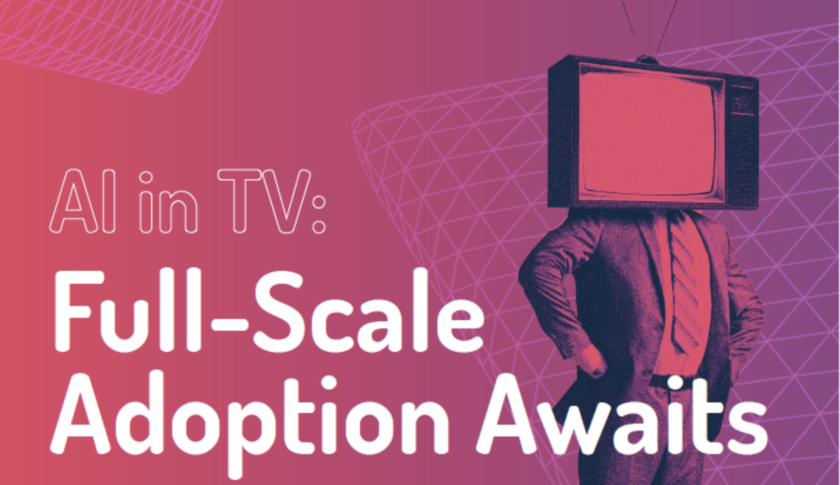Connections

Veritone: TV Players Embrace AI, But Slowly
Story Highlights
Veritone president Ryan Steelberg surveys the TV industry’s growing adoption of artificial intelligence (AI) and sees a lot to be encouraged by: more than half of TV company CEOs are already making concerted efforts to apply AI to their workflows, and there’s every indication those who haven’t acknowledge the benefits of AI-infused technology, and have it on their radar.
But, following a new survey by his company, Steelberg also has a better idea of the challenges that need to be overcome … and they won’t be easy.
While 54% of TV organizations are currently implementing AI (and 73% of those company CEOs are pointing to innovation and differentiation as what’s driving AI adoption), half of respondents to the survey said budgetary restrictions and lack of knowledge around what AI is and how it can help are the top factors preventing AI from hitting widespread usage. And perhaps the biggest problem: small- and medium-sized companies don’t have the funding that their larger counterparts have, making AI more difficult to access.
“That’s exasperated by the acute financial pressure TV networks are dealing with,” Steelberg said. “It’s a tough corner to be in, because the budget isn’t there to integrate AI and machine learning (ML). And when it comes to big organizations vs. medium and small companies, the AI divide continues to widen.”
Steelberg suggests companies limited by their budgets “baby-step” their way into the AI process, and that should start with an investment into the people who know what they’re doing with AI and ML. “You can be both a media company and a tech company, and you’re going to have to invest in tech people at some point.”
And Steelberg said one mistake TV players are making in the AI space is hesitancy from the C-suite down to embrace AI, with many companies outsourcing the work. And that’s causing many companies to fall behind.
 The report — “Pulse Check on AI Adoption in Television” — found that AI adoption may be common, but only on a small scale, with many TV organizations yet to take full advantage of what it’s capable of. And companies say they’ve have seen mixed results in their AI initiatives, (with larger organizations reporting the most satisfaction). Additionally, business and tech employees disagrees on the scale and strategy of AI efforts, something Steelberg said reveals differing priorities: Most CEO respondents (63%) said their companies are making conscious and strategic decisions to implement automation, while only 30% of CTOs said the same.
The report — “Pulse Check on AI Adoption in Television” — found that AI adoption may be common, but only on a small scale, with many TV organizations yet to take full advantage of what it’s capable of. And companies say they’ve have seen mixed results in their AI initiatives, (with larger organizations reporting the most satisfaction). Additionally, business and tech employees disagrees on the scale and strategy of AI efforts, something Steelberg said reveals differing priorities: Most CEO respondents (63%) said their companies are making conscious and strategic decisions to implement automation, while only 30% of CTOs said the same.
And when it came to companies’ specific approaches, 91% of CEOs said their approach was
centralized, while zero CTO respondents agreed with that assessment.
“While the demand for AI technology is growing in the TV industry, there remains an untapped opportunity to use AI to generate smart content, engage audiences, and, in particular, to create operational efficiencies and new revenue streams,” Steelberg said. “There is still enormous unrealized potential to fully leverage AI as a differentiator. Dominance in television and broadcast in the future will largely be driven by how well organizations take advantage of AI technology, especially now as the industry shifts to more remote work.”
The report found that the top five business processes being employed with AI include asset metadata creation, content recommendations, captioning/subtitling/scripting, encoding/transcoding and graphics creation.
To access the report, click here.









